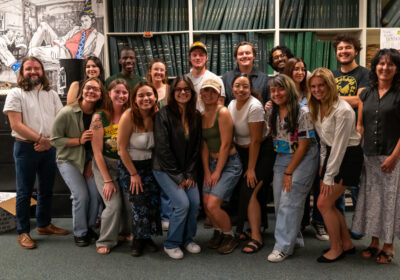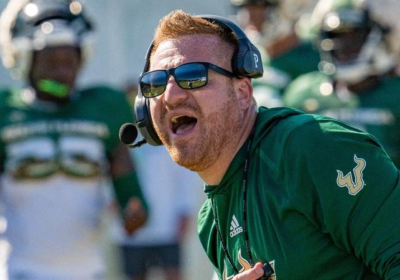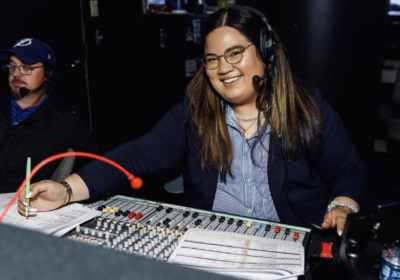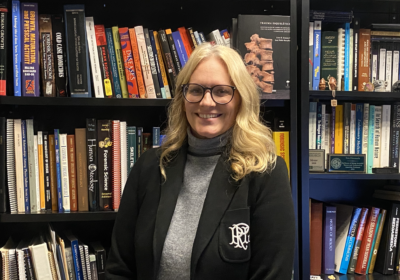A look into the night shift of University Police

You’ll likely see the flashing blue and red lights on top of a police cruiser before you hear the recognizable chirp of its siren.
As I walked out of the USF Police Department (UP) at 9 p.m. last Tuesday, I saw the lights.
Two white males were sitting on the ground. They were riding on a bike and a miniature motorcycle around campus during spring break when a majority of students were away for the week. A cop pulled them over and asked them a few questions. They were allowed to leave after a short conversation.
A cop.
I used to think police officers were just a badge and a vest. People who were looking for reasons to pull others over on the road. Stoic but somehow loud citizens who carried around guns and tasers.
Officer David Hobson is 32 years old. He’s been with UP for about four years. He orders a number one (chicken sandwich meal) at the Chick-Fil-A on 56th Street. He gets waffle fries and a large, blue Powerade.
He has two dogs — a Great Dane named Dallas and a Red Bone Coon Hound named Lincoln.
He loves sports. He’s a fan of the Dallas Cowboys and follows USF’s athletic teams closely. He even sits behind the benches for the men and women’s home basketball games when he can.
He graduated from USF with an accounting degree and worked for a large accounting firm before he left to work with his father in the same field. While he didn’t hate his office job, he knew he wanted to do something else. He wanted to help people, so he enrolled in the police academy.
He works 12-hour shifts, usually from 6 p.m. to 6 a.m. His girlfriend works for the City of Tampa Police Department. She works the day shift.
Sometimes, their schedules work out where he has off days the same time she does and they’re able to spend time together.
When he’s on duty, Hobson patrols Fowler and Fletcher Ave., often cruising through parking lots on campus scanning for anything out of the ordinary.
Last week, while several USF students were on a beach or a boat somewhere, Hobson approached a Ford E-350 van.
The box-shaped vehicle was coated in what appeared to be an amateur, white spray paint finish, and tags that were expired by nine months. At 10:20 p.m., it was parked on the side of the road near the entrance of parking lot 43, next to the USF Health-Psychiatry School of Physical Therapy.
He shined his car’s lights at the van and approached it, shining his flashlight through the windows on the side of the van. The blue lights flashing at a constant rate.
The van shook and a man tore open the sliding door.
Hobson and the man had a conversation. The van stopped working and the man stopped to sleep in the back of the van for the night.
Hobson advised the man he wasn’t allowed to come back on campus and that he had to get the van towed out of the parking lot that night.
I was brought back to the police station and my glimpse of what a UP officer’s night entailed was over. I learned about some of the legal processes and why UP does some of what it does — routine traffic stops to increase visibility, dissuading potential criminals by showing there is a police presence on campus.
It might be easy to get distracted by the badge and the vest and the gun and the taser but behind those flashing blue lights is a person. Hobson, in this case, is a person looking out for the safety of others.







